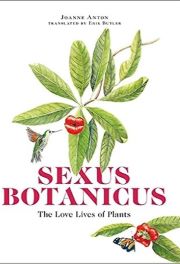Sexus Botanicus: The Love Lives of Plants

Joanne Anton, translated by Erik Butler
MIT Press, £26.00
This is an attempt to popularise information about the way in which plants are fertilised, starting with mosses, ferns and lichens (even though the latter aren’t plants), and then continuing through a range of carefully selected flowering plants. The structure and purpose of the various floral organs and breeding systems are well explained.
The four chapters on flowering plants use a few specific examples of plant species to cover each topic. The chapter on animal pollination includes examples of bee, bat, gecko, moth and hummingbird pollination. The following chapter is on deceptive plants that attract insects without giving them any reward. The next chapter focuses on hydrophilic plants such as eel grass and the white water buttercup.
The final chapter covers plants that tolerate extreme environments, such as the fire-resistant Queensland grass tree in Australia, the silversword on a volcano on Hawaii, and the coniferous relic Welwitschia in the Namibian desert.
The sex life of plants is well explained and a lot of interesting natural history is scattered throughout this profusely illustrated book. It would be useful for teachers wanting to explain the varieties of breeding systems of plants and looking for examples of each type of fertilisation.
Professor Sir Ghillean Prance FRSB


